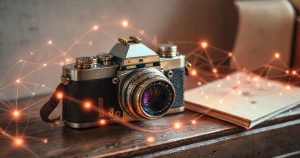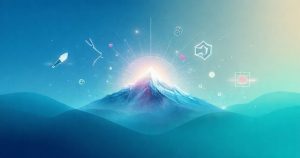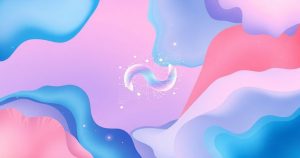Unlocking Cinematic Scenes: Comparing AI Image Generators
The world of cinematic scene creation has been revolutionized by the advent of AI image generators, empowering filmmakers, video creators, and artists to produce stunning, professional-grade visuals without extensive design experience or costly software. In this comprehensive guide, we’ll delve into the realm of AI-powered image generation, comparing the best tools, platforms, and models for cinematic scene creation, and exploring the latest trends, techniques, and strategies for maximizing their potential.
At the forefront of this revolution are free AI image generators like Icebox AI, which have democratized access to high-quality visual content creation. These platforms leverage sophisticated machine learning models, trained on vast datasets of images and text, to synthesize entirely new visuals that match the user’s descriptive input. Whether you’re a seasoned filmmaker or an aspiring content creator, understanding how to harness the power of AI image generators is crucial for staying ahead of the curve in the rapidly evolving landscape of visual storytelling.
The process of creating cinematic scenes with AI image generators involves more than just typing a prompt and waiting for the output. It requires a deep understanding of how these models work, how to craft effective prompts, and how to refine your results through iterative experimentation. For instance, prompts that include specific details about lighting, composition, and style can significantly enhance the quality and relevance of the generated image. Moreover, exploring different models and platforms can help you find the one that best aligns with your creative vision and technical requirements.
One of the most significant advantages of AI image generators is their ability to save time and resources. Traditional methods of creating cinematic scenes often involve extensive planning, shooting, and post-production, which can be costly and time-consuming. In contrast, AI image generators can produce high-quality visuals in a matter of seconds, allowing creators to focus on the artistic and narrative aspects of their projects. Additionally, the accessibility of these tools has opened up new opportunities for indie filmmakers, small businesses, and individual creators who previously couldn’t afford professional visual effects or design services.
However, the use of AI image generators also raises important questions about authorship, ownership, and the future of creative work. As these tools become increasingly sophisticated, they challenge traditional notions of art, design, and storytelling, prompting us to reconsider the role of human creativity in the age of machine learning. Despite these challenges, the potential of AI image generators to enhance, rather than replace, human creativity is vast, offering new avenues for collaboration between humans and machines that can lead to unprecedented levels of innovation and artistic expression.
How AI Image Generators Work
AI image generators rely on complex neural networks that are trained on vast datasets of images and their corresponding text descriptions. This training enables the models to learn patterns and relationships between visual and textual data, allowing them to generate new images based on text prompts. The quality and diversity of the training data are crucial factors in determining the performance and versatility of the AI model. For example, models trained on datasets that include a wide range of artistic styles, genres, and themes can generate images that are more varied and contextually relevant.
The process of generating an image involves several key steps, including text encoding, where the input text is converted into a numerical representation that the model can understand; latent space navigation, where the model searches for the most relevant visual features and patterns in its database; and image synthesis, where the model combines these features to create a new image. Each step requires careful tuning and optimization to ensure that the output meets the user’s expectations and creative goals.
Furthermore, different AI models and platforms specialize in different aspects of image generation, such as photorealism, artistic styles, or specific thematic content. Understanding these specializations and how they align with your project’s needs is essential for achieving the desired outcomes. For instance, if you’re working on a sci-fi film, you might prefer a model that excels at generating futuristic landscapes and architectural details, while for a historical drama, a model with a strong focus on period accuracy and costume design might be more appropriate.
Comparing AI Image Generators for Cinematic Scene Creation
When comparing AI image generators for cinematic scene creation, several factors come into play, including the quality of the generated images, the ease of use, the cost, and the level of control over the output. Free platforms like Icebox AI offer an excellent starting point for creators on a budget, providing access to powerful AI models without the need for costly subscriptions or software purchases. However, for more advanced users or professional productions, paid platforms may offer additional features, higher resolution outputs, and more detailed control over the generation process.
In terms of image quality, models like DALL-E and Midjourney have set high standards, producing images that are often indistinguishable from those created by human artists. However, the choice of model also depends on the specific needs of your project. For example, if you’re looking for highly stylized or abstract visuals, a model with a strong artistic focus might be more suitable, while for projects requiring precise control over lighting, texture, and composition, a more technically oriented model could be preferable.
Beyond the technical capabilities of the AI models, the user interface and overall user experience of the platform play a crucial role in the creative process. Intuitive design, real-time feedback, and the ability to iterate quickly are essential for refining your ideas and achieving the desired results. Moreover, community support, tutorials, and resources can significantly enhance your learning curve and productivity, especially for those new to AI image generation.
Best Practices for Using AI Image Generators
To get the most out of AI image generators, it’s essential to develop a set of best practices that cover prompt crafting, model selection, and output refinement. Starting with clear and descriptive prompts is vital, as the quality of the input directly affects the quality of the output. Including specific details about the desired scene, such as characters, settings, actions, and emotional tone, can help the model produce more relevant and engaging visuals.
Experimenting with different models and platforms is also recommended, as each has its strengths and weaknesses. Understanding these differences and matching them to your project’s specific needs can lead to more satisfying results. Additionally, refining your outputs through post-processing techniques, such as editing software, can further enhance the quality and polish of your final images.
Collaboration between humans and AI is a two-way street. While AI can generate stunning visuals, human intuition, creativity, and judgment are indispensable for guiding the process, selecting the best outputs, and ensuring that the final product meets artistic and narrative goals. Embracing this collaborative approach can lead to innovative and captivating cinematic scenes that push the boundaries of storytelling and visual expression.
Conclusion
In conclusion, AI image generators have revolutionized the process of creating cinematic scenes, offering filmmakers, video creators, and artists unprecedented tools for bringing their visions to life. By understanding how these tools work, comparing their strengths and weaknesses, and developing best practices for their use, creators can unlock new levels of productivity, creativity, and innovation in their work. Whether you’re a seasoned professional or just starting out, embracing the potential of AI image generators can help you achieve your artistic goals and push the boundaries of what’s possible in the world of visual storytelling.
As you embark on your journey with AI image generators, remember that the key to success lies not just in the technology itself, but in how you choose to wield it. By combining the power of AI with your own creativity, passion, and vision, you can create cinematic scenes that inspire, captivate, and leave a lasting impression on your audience. So, start exploring the limitless possibilities of AI image generation today, and discover how these tools can help you unlock your full potential as a creator.
For more information on how to get started with AI image generators, including tutorials, resources, and the latest updates on the technology, visit Icebox AI, your premier destination for free, powerful, and easy-to-use AI image generation tools. With Icebox AI, you can begin creating stunning cinematic scenes in minutes, without any prior design experience, and join a community of creators who are pushing the boundaries of what’s possible with AI.



